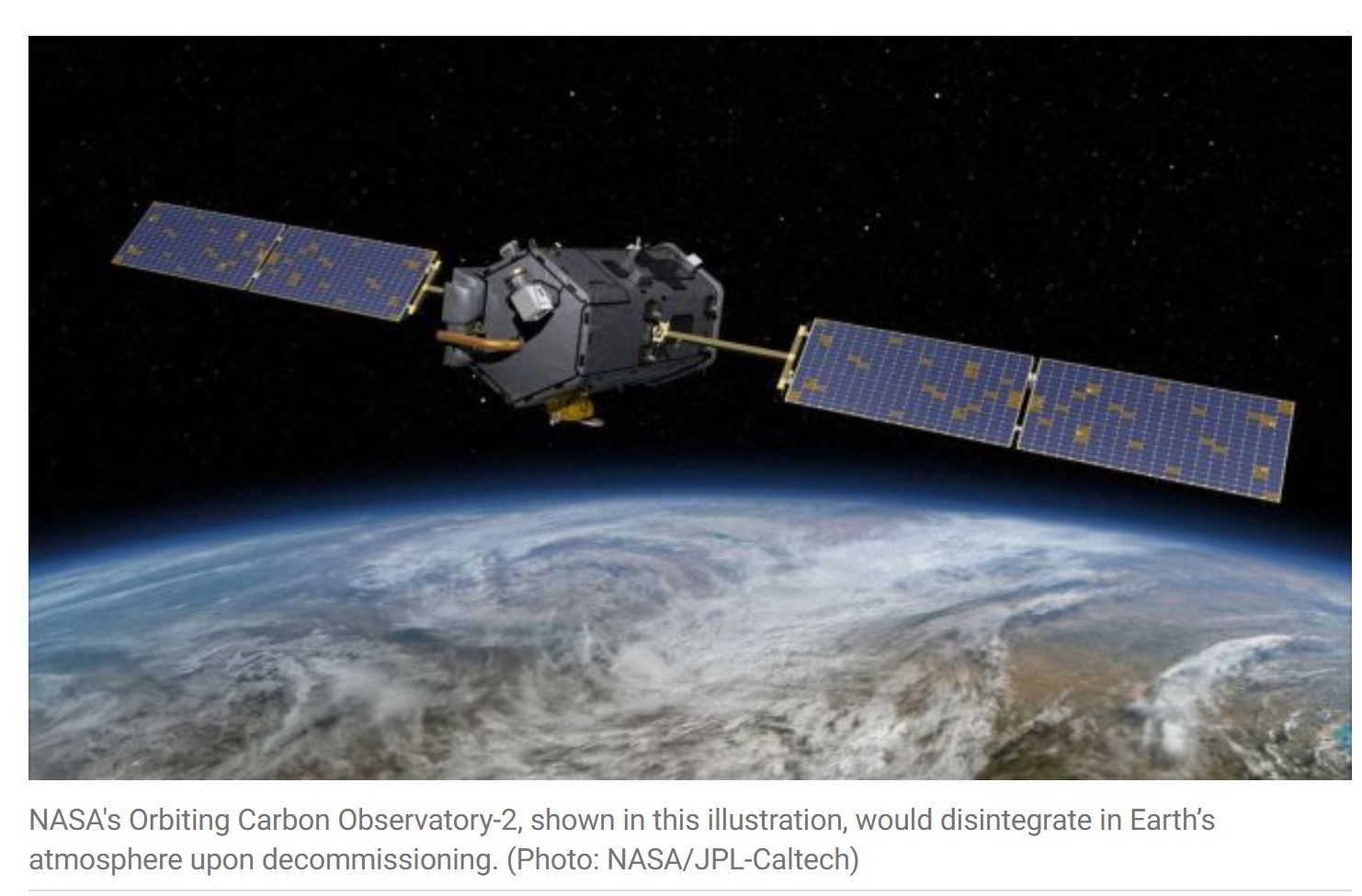Orbiting Carbon Observatories (OCO)Program

- 17 Aug 2025
In News:
The Trump administration has proposed terminating NASA’s Orbiting Carbon Observatories (OCO) program, a key initiative monitoring global carbon dioxide (CO?) emissions and plant health. The move, part of the 2026 federal budget, has triggered concerns among scientists and lawmakers given its implications for climate monitoring and policy.
About the Orbiting Carbon Observatories (OCO) Program
- Objective: Dedicated Earth remote-sensing satellites designed to observe atmospheric CO? and study its role in climate change.
- Timeline:
- OCO-1 (2009): Failed shortly after launch.
- OCO-2 (2014): Successfully launched, providing high-precision global CO? data.
- OCO-3 (2019): Installed on the International Space Station (ISS) to enhance observations.
- Significance:
- Produced high-resolution maps of plant growth, drought stress, and carbon fluxes.
- Helped discover that the Amazon rainforest emits more CO? than it absorbs, while boreal forests in Canada and Russia are turning into unexpected carbon sinks.
- Tracked photosynthesis rates to forecast crop yields, drought conditions, and food shortages—data crucial for global food security and preventing civil unrest.
- Utilized by the US Department of Agriculture and private agricultural firms for crop yield predictions and rangeland management.
Reasons for Proposed Termination
- The administration claims the missions are “beyond their prime mission” and need to align with new budgetary priorities.
- Funding for OCO missions is excluded from the proposed 2026 budget.
International dimension:
-
- Scientists are exploring partnerships with Japan and Europe to keep OCO-3 operational on the ISS.
- Private or philanthropic funding is also being considered, though experts warn this is unsustainable.
